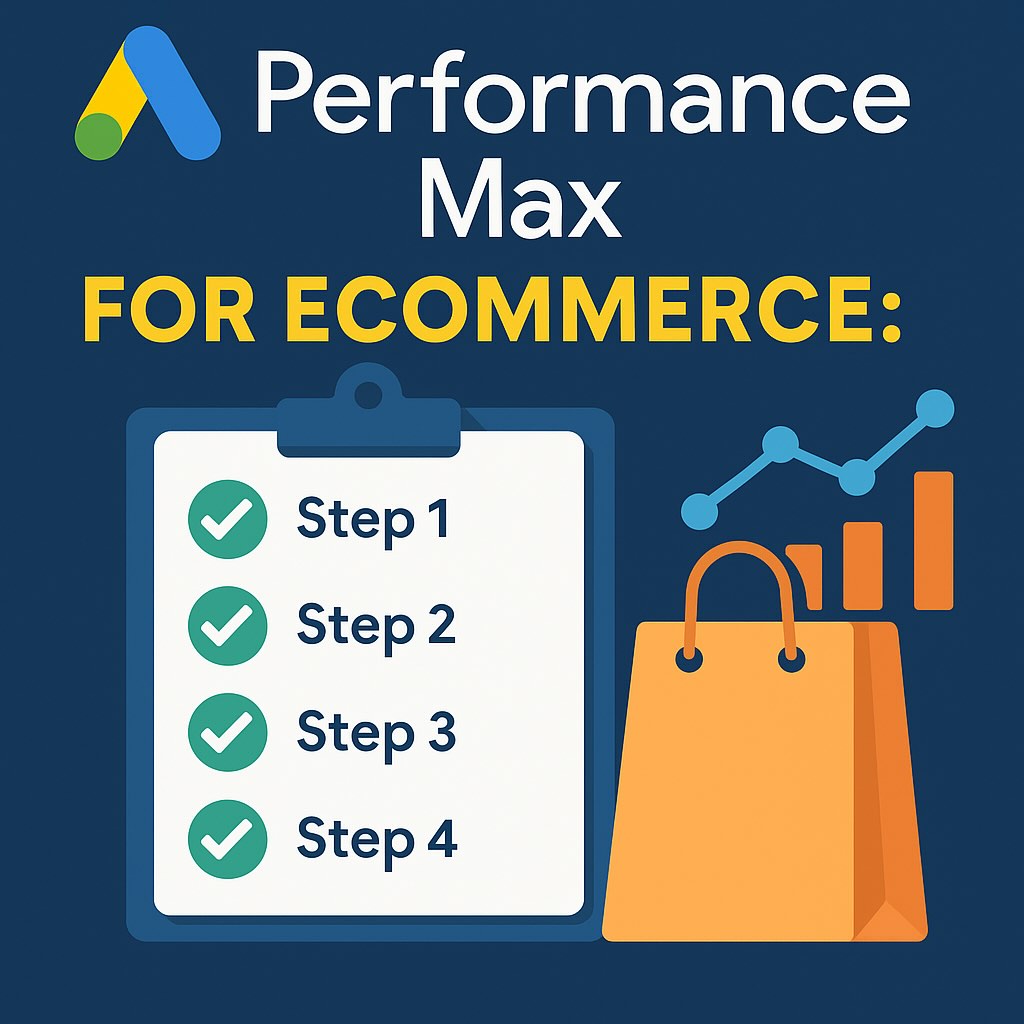Think of Performance Max like hiring a salesperson who works 24/7 across Google’s platforms. Some days they bring in a flood of sales. Other days? They waste your budget chasing the wrong crowd.
Used the right way, Performance Max can help you scale faster than any other Google Ads campaign. But go in unprepared and it’ll burn through your ad spend before you’ve had your morning coffee.
This guide is for eCommerce brands who want to use PMax wisely — with control, strategy, and clear goals. No guesswork. No magic switches.
What is Performance Max?
Performance Max, or “PMax,” is a fully automated campaign type in Google Ads. Instead of picking keywords or choosing where your ads show, you give Google your goals, creative assets, product feed, and targeting signals. Then it runs ads across the entire Google network – Search, Shopping, YouTube, Gmail, Display, Maps – and uses AI to optimise for conversions.
It’s like putting your entire ad strategy in the hands of an algorithm. If you’re not ready, it burns through budget. But if you’ve done the groundwork, it can bring in serious results.
Before You Use Performance Max
Let’s be clear. Performance Max is not where you start. It’s where you scale.
You should only run PMax after you:
- Have conversion tracking set up properly
- Know your best-selling products
- Have tested your landing pages and messaging
- Are already getting sales from other campaigns (like Search or Shopping)
The 2025 PMax eCommerce Checklist
1. Conversion Tracking Must Be Rock Solid
- Purchase tracking set up in GA4 or Google Ads
- Values passed back with each sale
- Enhanced conversions or server-side tracking set up where possible
2. Your Product Feed Should Be Spot On
- Titles include product type, brand, colour, size, material, and benefit
- Descriptions clearly explain the use case and audience
- No disapproved products or warnings in Google Merchant Center
3. Optimise the Google Merchant Center Store Quality
- Shipping and returns info is accurate
- Policies are up to date
- High-quality images are in place
- GTINs, MPNs, and availability data are complete
4. Prep Your Website and Landing Pages
- Pages load fast, especially on mobile
- Key products have strong visuals and reviews
- Your checkout works smoothly with minimal friction
5. Use Audience Signals (But Don’t Rely on Them)
- Import your customer lists or remarketing audiences
- Add interest-based or demographic audiences that align with your buyers
- Use these as signals – Google will still explore broadly
6. Build Strong Asset Groups
- Structure by product category or theme
- Each group should have:
- At least 3 headlines (max 30 characters)
- At least 2 descriptions (max 90 characters)
- 1 long headline
- Square and landscape images
- A logo and optional video (10 seconds+)
7. Choose the Right Bidding and Budget Strategy
- Start with Maximise Conversion Value or Target ROAS (if data supports it)
- Give it enough data to learn
- Avoid setting budgets too low or pausing too quickly
8. Watch for Overlap With Other Campaigns
- Exclude brand terms from PMax if you’re running branded Search campaigns
- Use campaign priorities and negatives carefully if Shopping is still running
9. Monitor, Optimise, and Adjust
- Replace underperforming assets every few weeks
- Check which product types convert and shift focus if needed
- Analyse top signals to see what’s working
Download this checklist as a printable PDF here: [Insert PDF Download Link]
Advantages of PMax (When Set Up Right)
- One campaign runs across all of Google
- Easier to scale once your tracking and feed are solid
- Good for finding new customers outside of Search
- Less day-to-day micromanagement required
Disadvantages (If You’re Not Ready)
- You can’t see exactly what search terms triggered your ads
- Less control over where and how your ads show
- Needs good data to perform well
- Can waste budget quickly if left unchecked
Final Thoughts
Performance Max isn’t magic. It’s a machine. And machines are only as good as the data and instructions you feed them.
If your tracking is sloppy, your feed is weak, and your budget is low, PMax won’t save you.
But if you’ve got the basics covered, and you treat PMax as part of a broader campaign mix – not your only channel – then it can be a serious asset for growth.
Need help setting up PMax the right way?
Book a free call and we’ll help you launch with confidence.
FAQs
How much conversion history do I need before launching PMax?
While Google doesn’t publish a hard minimum, best practices suggest you should already be running other campaigns (Search/Shopping) and have consistent conversion data for 4–6 weeks. PMax’s machine learning needs that baseline to learn. If you launch too early, you risk weak results and wasted spend.
Can PMax target entirely new customers or is it just for remarketing?
Yes — PMax can absolutely help find new customers, not just remarket. You should use “New Customer Acquisition” goals or similar settings if your aim is new users. But: you must provide first-party data (customer lists) and clear signals if you want the algorithm to favour new prospects.
What level of control will I have over placements and keywords?
PMax gives less keyword/placement-level control compared with traditional Search campaigns. The algorithm chooses placements across Google’s networks. For branded queries or other sensitive placements you don’t want, make sure to use brand exclusions, negative keywords, or campaign structure to guard against unwanted traffic.
Do I have to include video assets in my PMax campaign?
Yes, ideally you should. Google recommends you include videos (or allow auto-generated ones) because PMax spans YouTube, Discover, etc. Campaigns with video assets often perform better. If you skip video entirely, your reach and volume of conversions may be limited.
How long does PMax need to run before I see results, and when should I scale?
PMax needs a learning period — many sources recommend at least 4–6 weeks of stable budget and conversions before judging performance. Once it’s stable and hitting your ROAS/CPA targets, then you can scale. Don’t scale too early, or you risk disrupting the algorithm’s learning.
Will PMax interfere with my existing Search or Shopping campaigns?
It can — PMax has overlapping inventory and may capture traffic your other campaigns were getting. That’s why you should run it alongside, not instead of, Search/Shopping campaigns. Proper structuring and exclusion settings are essential to prevent internal cannibalisation.


